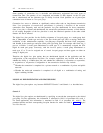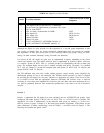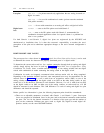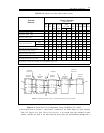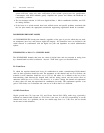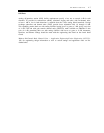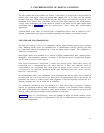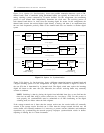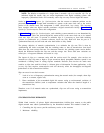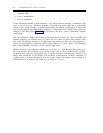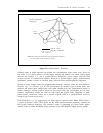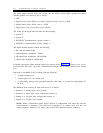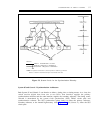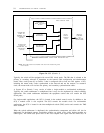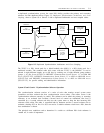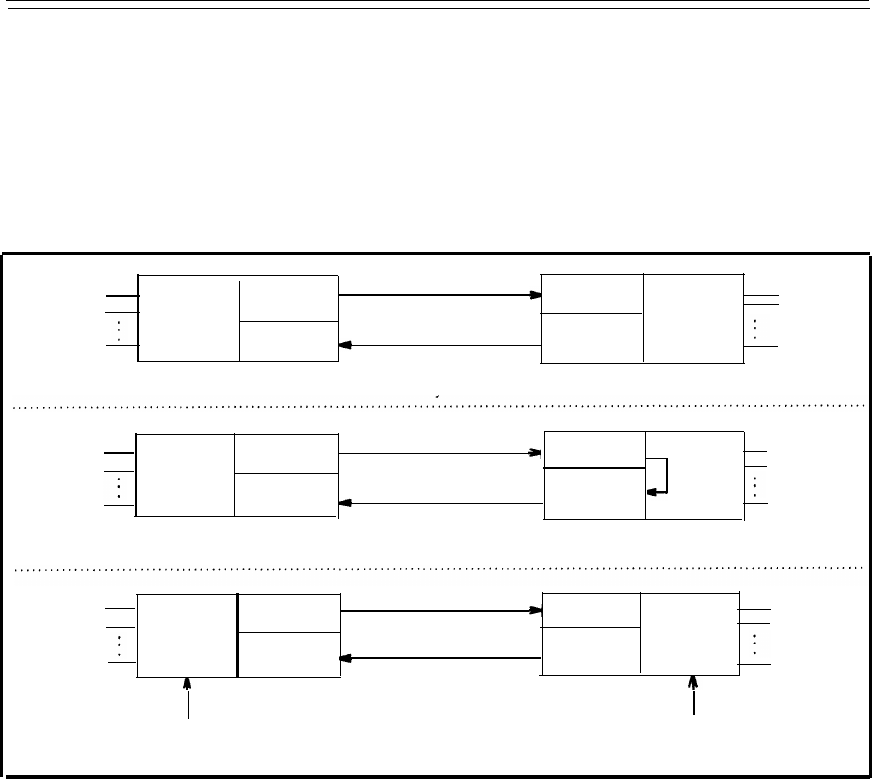
5-2 SYNCHRONIZATION OF DIGITAL FACILITIES
Figure 5-1-A, Options for Synchronization, shows one possible connection between a pair of D4-
channel banks. Such a connection (using D4-channel banks) can typically be found with a pair of
analog switching systems connected by T1-carrier facilities. For this arrangement, the transmitting
portion of each channel bank independently determines the clock rates. The receiving portion of
each channel bank derives its clock from the incoming digital bit stream. In this arrangement, the
channel banks convert the received digital signal directly to analog, and there is no requirement that
the two clock frequencies precisely match as the channel bank does not interface to another digital
system.
F
TRANSMIT
0
RECEIVE
F
CHANNEL
BANK
ANALOG
CHANNEL
BANK
0
ANALOG
F
TRANSMIT
RECEIVE
1
F
DIGITAL BIT STREAM
1
A: Not Synced
F
DIGITAL
SWITCHING
SYSTEM
0
TRANSMIT
RECEIVE
DIGITAL
CHANNEL
BANK
DIGITAL
TRANSMIT
F
F
0
RECEIVE 0
F
0
DIGITAL BIT STREAM
B: Loop Timed
F
DIGITAL
SWITCHING
SYSTEM
0
RECEIVE
TRANSMIT
DIGITAL
SWITCHING
SYSTEM
DIGITAL
DIGITAL
F
F
TRANSMIT
RECEIVE
0
F
0
DIGITAL BIT STREAM
0
C: Externally Synced
REFERENCE
CLOCK RATE F
REFERENCE
CLOCK RATE F
0
0
Figure 5-1. Options for Synchronization
Figure 5-1-B, Options for Synchronization, shows a different connection between a channel bank and
a digital switching system. For this configuration, the digital switch transmits a digital bit stream at
the rate (F0) that is determined by its internal clock. The digital switch must receive the incoming
digital bit stream at this same rate (F0). Otherwise, the switch’s receiving buffer may eventually
overrun or underrun.
NOTE: Switching is done by placing the signals from individual time slots on one link into the
time slots on other links using a process called time-slot interchange (TSI). For this process to
work properly, bit synchronization must be maintained on all links terminating on the digital
switching node, no matter where the links originate.
If the average transmit rate is faster than the average receive rate, the receive buffer will eventually
overrun. If the average receive bit-clock rate is faster than the average transmit bit-clock rate, the
receive buffer will eventually underrun. It is necessary to prevent overruns (deletions) and underruns
(repetitions) by synchronizing the network properly. Improper synchronization results in buffers
repeating or deleting bits in 1-frame increments.



